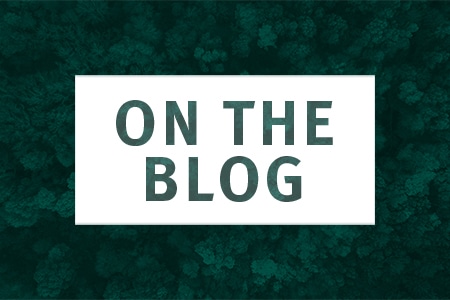This video covers methods and tips nonprofits and their CFOs can use to maximize the value of their organization through their commercial insurance investment, including important problems and solutions for the unique nonprofit sector as well as some case examples.
Double click for larger view
Bill Palmer, Partner and Consulting CFO at CFO Selections, interviews Paul Vlcek with The Partners Group Commercial Insurance Division. Issues addressed include the significant and unnecessary overpricing of insurance in the nonprofit space; how nonprofits are responding to the threat of cyber breaches, which have affected local organizations here in the Northwest (Seattle and Portland) — putting their reputation and donor relationships at risk. Additionally the challenge of underwriting nonprofits vs. for-profit organizations; and the assumption that there are limited ways to purchase workers compensation– a huge cost, particularly for nonprofits in the medical and human services industry segments.
Q: How is the state of the marketplace today specifically impacting the nonprofit sector?
A: The marketplace as a whole is soft, meaning the rates should be going down.
The nonprofit sector is unique because there have only been a couple of carriers that have historically served the nonprofit space. Those carriers have been very successful at operating in a niche, and allowing a little bit of annual rate creep every year. The rate increase is typically 2-5%. However, we’re starting to experience several carriers investing resources and developing new programs, new forums, and really focusing in on the nonprofit sector. These carriers are coming out very aggressively in terms of coverage and pricing.
Although the market is soft, these specialist carriers who have had that annual rate creep are now starting to see a bit of a trend downwards. For the buyer, this is a great time to be outside the marketplace shopping for insurance.
Q: Reputation risk is one of the most significant risks to any nonprofit organization. It affects the relationships with their donors, their employees, the constituencies they’re trying to serve, and certain other funding organizations. How are nonprofit organizations responding to this risk of a cyber breech?
A: Not fast enough unfortunately. While there is a segment of buyers who understand the risk, know it’s important and have purchased the insurance, unfortunately the majority of nonprofits aren’t purchasing cyber insurance or not purchasing enough. Nonprofits are not exempt from a cyber breach and the risk is real. In the nonprofit industry, cyber risk insurance is a line item on the balance sheet. They’re sorting through pennies not dollars, and every expense is considered.
Recently there have been some well publicized cyber breaches at nonprofits in the Northwest. These breaches have caused significant damage in terms of their reputation as well as the relationships with donors and employees.
Q: What is it about nonprofits that make them harder to underwrite?
A: This is a question that has been asked for a long time. It comes down to what the mission is at the organization. Typically the mission of a nonprofit is to help and serve people. That can look completely different one day to the next, making it very tough for an underwriter to wrap their head around what a nonprofit does.
In contrast, a machine shop has a process for everything. An underwriter can look at that process and determine what rate they need to apply, and be fairly accurate. When underwriting a nonprofit, it takes a little more faith and understanding of how this market works and what these organizations do. Quite frankly, there are just not a lot of carriers out there who have invested the time and resources to truly understand the nonprofit sector.
Q: Workers’ compensation is a huge cost for nonprofits, particularly those in the medical space or the human services space. Washingtonians feel like they don’t have much of an option in purchasing L&I coverage. Is that true?
A: Most individuals believe that Washington is restricted in purchasing L&I coverage, and that is a fair statement. There are four different ways you can purchase your L&I insurance. By far, the most popular is direct from L&I. At The Partners Group we focus on the retro group feasibility study.
Most buyers who are in a retro group believe there are no other options. The truth is there are almost 50 retro groups in Washington. A feasibility study figures out which retro groups an organization qualifies for. Then there is a detailed analysis that shows which groups the organization fits best in.
Case Example:
As a great case example, just recently we took an organization who was in a retro group and did a feasibility study. We found out we could put $75,000 back into their pocket just by changing retro groups.
Q: What should CFOs be doing to maximize the value of their insurance program for the organizations they represent?
A: They need to get involved. That is the one item people struggle with – everyone is busy. Everyone is running hot, running thin and sorting through pennies, not dollars. There just doesn’t seem to be enough time in the day to invest into the insurance purchasing process.
A piece of advice – take the time and get to know your underwriter. Sit down with your broker. Sit down with the person who is responsible for protecting your assets and covering your liabilities, and get to know them. Make them your friend, because at the end of the day they have a lot of power. They don’t get the opportunity to sit down with every client, but if you can change the dynamic of that relationship, they will go to bat for you and they will look out for you.
I would even say you should not only know your incumbent underwriter, but you should know who is next in line because you never know what the next day is going to bring. Maybe a carrier exits the marketplace or you have a bad claim. Maybe your loss history looks terrible and you’ve got to go to market with a ‘black eye’, so to speak. You want to know your incumbent underwriter plus the next in line, and you want them to be your friend. You want to be able to maximize that relationship so you don’t put yourself in a bad situation.
Case Example:
Bill Palmer just recently got involved with the underwriter for one of the CFO Selection’s nonprofit clients, in which “We sat down with the underwriter. We explained everything from the architecture of the facility, to our HR policies. We described how we treat people and how our operating policies as a staff are designed to minimize our risk. The underwriter got very comfortable with what we were doing and our organization ended up getting a really great rate.”
Most CFOs or individuals inside the organization who are responsible for the insurance purchasing process believe they’ve met the underwriter when they’ve only had a risk control or an auditor visit. It is different when you meet with the underwriter… you get results. You have the key decision maker inside your office and you can show him around your facility. That makes a difference in the underwriter’s level of understanding!
All nonprofit CFOs should get involved. It pays to take some ownership in understanding your organization’s investment in insurance.
If you want to learn more, contact us through the buttons below or sign up for the ongoing series of these informational videos that will help you best maximize the value of your organization’s investment in insurance.
About the Presenting Companies–
Bill Palmer, Partner and Consulting CFO at CFO Selections, is responsible for the nonprofit market segment at CFO Selections, where they have dozens of nonprofit organizations as clients. The experienced CFO Selections team helps nonprofits evaluate their financial situation, identify necessary improvements, and strengthen their organization for the future. They understand the unique strategic and financial challenges inherent in nonprofit settings, and work with clients to provide the financial leadership required to move forward with their mission. www.cfoselections.com | Contact us
The Partners Group Commercial Insurance Division manages the business risks for hundreds of employers. We provide an unmatched depth and breadth in commercial insurance and risk management services combined with extraordinary people who possess an unusual ability to connect on a personal level. We work hard to understand the unique risks and exposures of your business, and identify the solutions to provide the right coverage for the right price. As an independent company The Partners Group can tailor solutions to work specifically for you, even creating new policies and programs, if that’s what you need. www.thepartnersgroup.com | Contact us
For over 35 years The Partners Group has been serving the financial and insurance needs of employers, medical professionals, and successful individuals with services including employee benefits and business consulting, retirement planning, investment services, commercial and individual insurance. We have built our business from the ground up to insure we are a thriving organization for the next 35 years. Although we have developed a national network and reputation, you can count on our local commitment and service. We deliver through the hard work of over 140 teammates, who tirelessly provide results greater than the sum of our parts. The Partners Group has offices in Portland, Lake Oswego, and Bend OR; Bellevue, WA; and Bozeman, MT. www.tppgrp.com | Contact us
Tune in to get more quick tips from the Commercial Insurance Division! For more tips, please subscribe.



